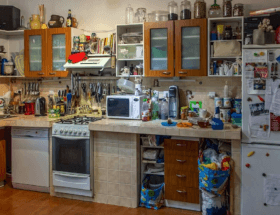For people living in the urban areas and big cities, land is always a scarce resourse and if you love to spend some time among green leaves but can’t give up the city life, a small rooftop garden can be a great place to look into.
As the name says, rooftop gardens are well gardens on your rooftop. It is an excellent use of a usually unused space to create not only a green space but some fresh organic produce right above your head.
However, unlike usual gardening, rooftop gardening can be a bit scary for some people as you have to take some precautions while growing your garden.
Let’s explore how to make your rooftop garden dreams come true.
Why Create a Rooftop Garden?
Rooftop gardens aren’t just pretty – they have many benefits. They make excellent use of otherwise empty space, giving you extra living area without expanding your home’s footprint.

During hot summer months, these gardens help cool your home by providing shade and reducing heat absorption. A rooftop garden creates a peaceful retreat where you can escape from daily stress and connect with nature.
Perhaps best of all, this space allows you to grow your own plants, flowers, and even food right at home. They are perfect for getting organic vegetables and even some fruit.
Planning Your Rooftop Garden
Check Your Building’s Structure
Safety first! Before buying any plants or furniture, make sure your roof can support the extra weight of soil, containers, plants, and furniture. Water adds significant weight too, especially after heavy rain.
Check with your landlord or building manager for permission, as some buildings have restrictions on rooftop use. Find out if there are specific rules about what you can place on your roof or if you need special insurance coverage for your garden space.
For roofs with weaker structures, you should avoid ceramic planters and instead go for either wooden or plastic planters. Some people even use grow bags for seasonal vegitables and they are cheap and lightweight.
Consider Sun and Wind
Think about how sunlight moves across your roof throughout the day. Some areas might receive full sun from morning to evening, while others get partial shade.
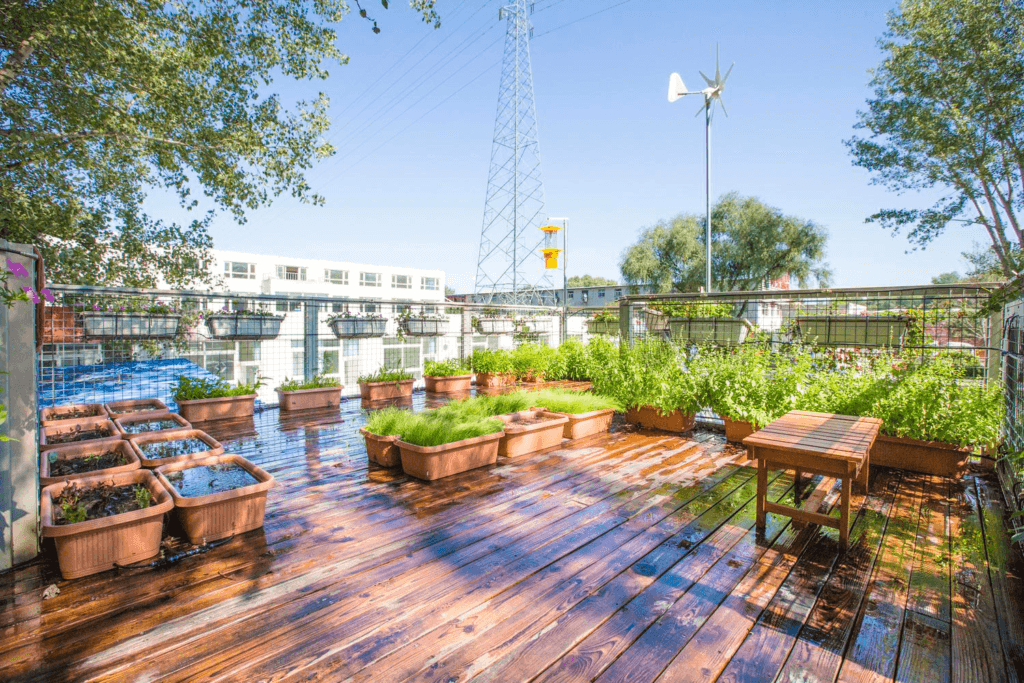
Map these zones to help choose the right plants for each spot. Rooftops are typically much windier than ground-level gardens. This extra wind can dry out plants quickly and might blow over tall plants or lightweight furniture.
Consider how you’ll secure items and select wind-resistant plant varieties if your area is particularly windy.
Choose a Style
Pick a garden style that speaks to you and fits your personality. A cottage garden brings charm with informal, abundant flowers and a cozy, lived-in feel. Modern gardens feature clean lines, minimal color schemes, and simple plants arranged in matching containers for a sleek look.
Vegetable gardens are practical and rewarding, providing fresh produce right at top of your roof. A zen garden creates a peaceful atmosphere with simple plant arrangements, natural materials, and perhaps a small water feature for tranquility.
Essential Elements for Your Rooftop Garden
Containers and Planters
Since you can’t plant directly into your roof, containers become essential for your garden. Large pots work well for bigger plants and small trees, giving them enough soil depth for healthy roots.
Window boxes look charming along edges and railings while taking up minimal floor space. Hanging baskets add vertical interest and free up walking areas on your rooftop. Raised beds create dedicated spaces for vegetables or flower groupings with enough soil depth for good growth.
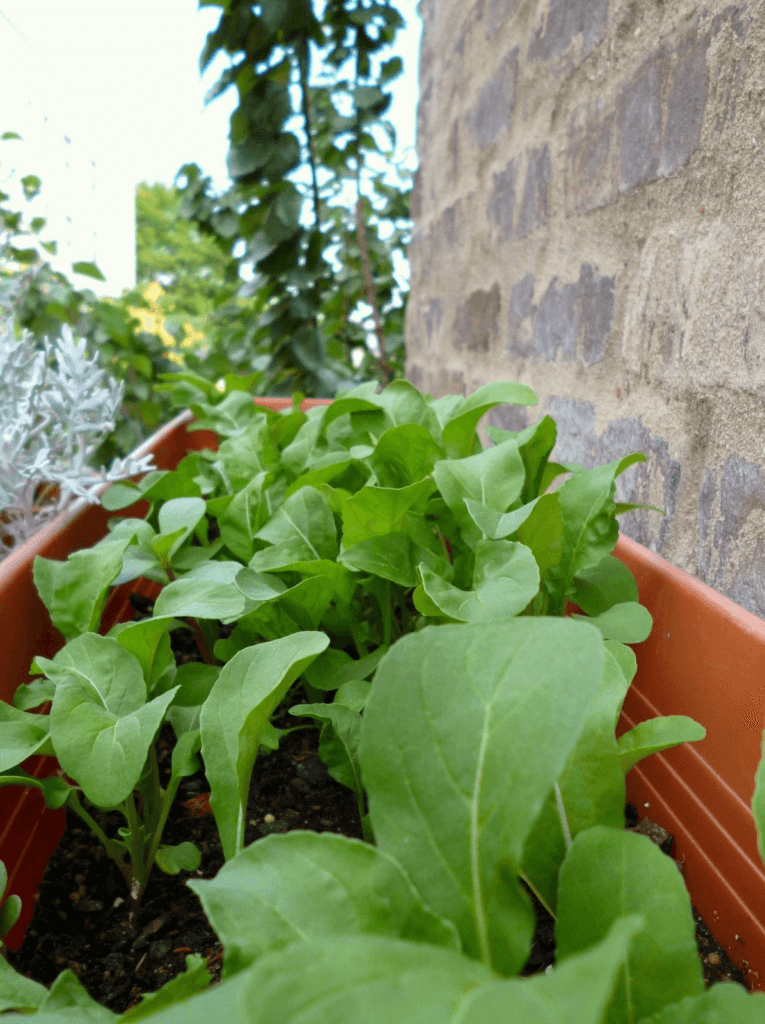
Choose containers that match your style while standing up to weather conditions. Plastic pots offer lightweight durability, making them easier to move and less stressful on your roof structure. Ceramic containers provide beautiful aesthetics but weigh more and may crack in freezing temperatures without proper care.
Choosing the Right Plants
Select plants that will thrive in your specific rooftop conditions. For sunny rooftops, lavender thrives and provides lovely fragrance and purple blooms.
Rosemary grows well in heat and offers herbs for cooking. Succulents store water in their leaves, making them perfect for hot, dry conditions. Petunias provide bright colors all summer with minimal care. Cherry tomatoes grow happily in containers and provide tasty treats.
For shadier spots, ferns add lush, tropical feelings with their delicate fronds. Hostas offer beautiful foliage in many variegated patterns without needing much sun. Impatiens bloom continuously in shady areas with little maintenance.
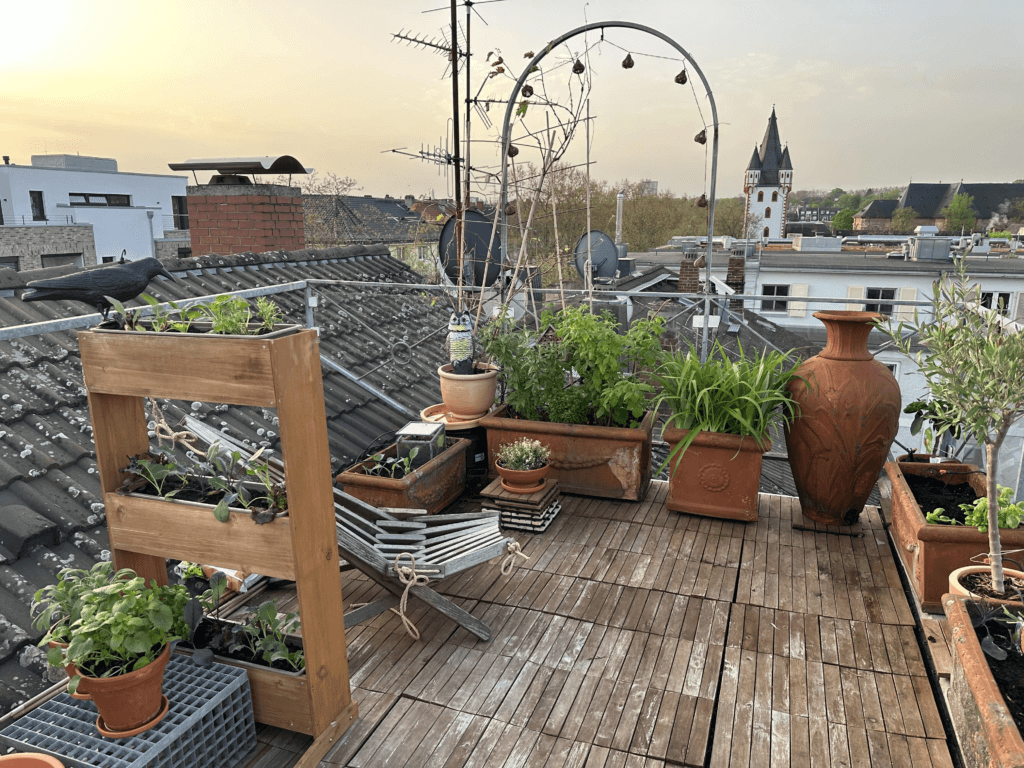
Mint grows easily in partial shade and provides fresh herbs for drinks and cooking. Lettuce appreciates cooler, less sunny spots and provides fresh salad ingredients.
New gardeners should consider starting with foolproof plants. Snake plants survive neglect and purify air. Geraniums bloom for months with minimal care.
Herbs like basil and thyme grow quickly and are immediately useful in cooking. Marigolds resist pests and add cheerful orange and yellow colors to your space.
Creating Privacy
Make your garden feel like a private oasis away from neighboring buildings and overlooking windows. Tall plants like bamboo or ornamental grasses create natural screens that move beautifully in the breeze.

Trellises with climbing plants like ivy or morning glories form living walls that add greenery while blocking views. Decorative screens provide immediate privacy with interesting patterns and designs.
Outdoor curtains offer flexible privacy options that can be opened or closed as needed.
Comfortable Seating
Every garden needs a place to sit and enjoy the view! Weather-resistant chairs and tables create a perfect spot for outdoor meals or morning coffee.
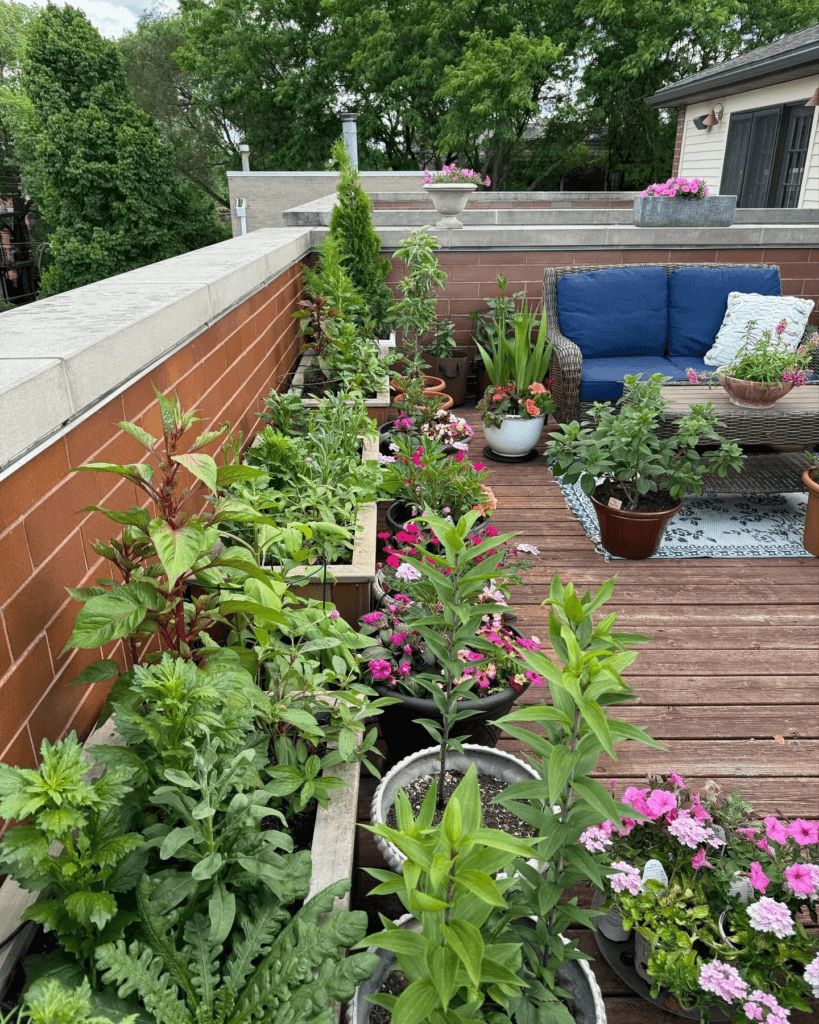
A small bench tucked among plants offers a charming spot to read or simply enjoy your garden. Floor cushions provide casual, movable seating options for flexibility and a relaxed feel. If your roof structure allows for secure attachment points, a hammock creates the ultimate relaxation spot for afternoon naps or stargazing.
Practical Tips for Success
Watering Solutions
Watering can be challenging on a rooftop where hauling watering cans up stairs gets tiring quickly. A simple drip irrigation system with a timer delivers water directly to plants without waste and works even when you’re not home.
Self-watering pots have built-in reservoirs that provide consistent moisture and reduce how often you need to water. Grouping plants with similar water needs together creates efficient watering zones.

If your building allows it, a rain barrel collects free water and reduces your environmental impact.
Weather Protection
Your rooftop garden faces more extreme weather than ground-level spaces. Install windbreaks like decorative screens or strategic plantings to protect delicate plants from strong gusts.
Create shade options with umbrellas or sail shades for hot summer days when both you and your plants need relief. Move especially delicate potted plants inside during severe storms or freezing temperatures. Before bad weather arrives, secure furniture, decorations, and lighter pots to prevent damage or items blowing away.
Maintenance Tips
Keep your garden looking great with regular, simple care. Water early morning or evening during summer to reduce evaporation and prevent leaf scorch from water droplets in bright sun.
Feed plants with appropriate fertilizer every few weeks during the growing season to replace nutrients that wash out of containers faster than garden soil. Remove dead flowers regularly to encourage plants to produce more blooms instead of seeds.
Watch for pests like aphids or spider mites, treating problems early before they spread.
Decorating Your Garden
Add personal touches to make your garden special and unique. Solar lights charge during the day and create magical evening ambiance without needing electrical outlets. Colorful pillows and outdoor rugs add comfort and personality while defining seating areas.
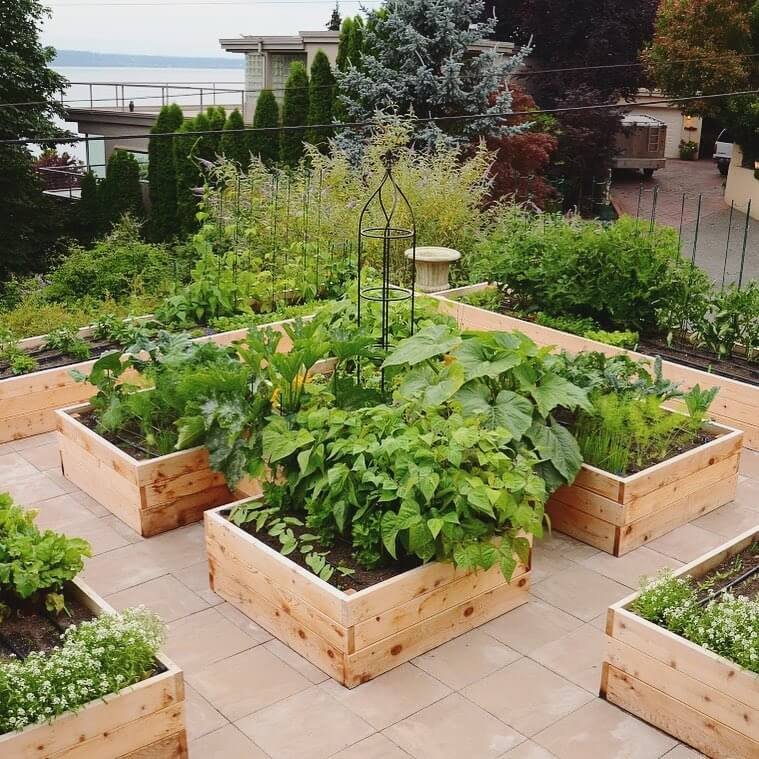
Wind chimes bring gentle, soothing sounds that mask urban noise. Bird feeders attract feathered visitors, adding movement and life to your garden. Strategically placed mirrors create illusions of more space and reflect beautiful plantings.
I have written a detailed blog post about Rooftop Garden Decor so check it out for ideas and inspirtions.
Budget-Friendly Ideas
Creating a rooftop garden doesn’t have to break the bank if you plan carefully. Start with a small area and gradually expand your garden as budget allows rather than trying to complete everything at once.
Watch for end-of-season sales when garden centers offer deep discounts on plants and furniture to clear inventory. Repurpose items like colorful buckets, wooden crates, or even old dresser drawers as unique planters after adding drainage holes.
Growing plants from seeds or cuttings costs much less than buying mature plants. Join local garden swap groups where members trade extra plants, seeds, and sometimes even garden supplies.
Final Thoughts
Your rooftop garden is a special place that reflects your style and brings nature into your urban space. Take your time creating it, experimenting with different plants and arrangements until you find what works best.
Don’t be afraid to try new ideas – gardening is about learning and growing along with your plants. The most important thing is that your garden brings you joy and provides a peaceful retreat from busy daily life.
With some planning, creativity, and care, your rooftop can become the outdoor retreat you’ve always dreamed of. Happy gardening!

